 Backend Development
Backend Development PHP Tutorial
PHP Tutorial Detailed explanation of steps to build backend login system in Laravel_php example
Detailed explanation of steps to build backend login system in Laravel_php exampleThe example in this article describes how to build a backend login system in Laravel. Share it with everyone for your reference, the details are as follows:
Today I want to use laravel to build a backend system. I need the simplest one that allows users to log in to the system. After trying it out, I feel that laravel's user login is really happy. Of course, the premise is that the user management system you want is the simplest one, that is, you only need to be able to log in without user permissions.
I won’t use the default user table as an example here, as it would be easy to confuse it with some of Laravel’s default settings.
First confirm, the user table in the background, I designed the table to be called badin. Each administrator has a username, a nickname, an email, and a password
For fun here, use laravel's migration to create the table (actually you don't need to use this tool to create the table)
1 Install the most basic laravel framework
2 Create migration file:
./artisan migrate:make create-badmin-table
3 Found an additional php file under app/database/migration/:
2014_10_19_090336_create-badmin-table.php
4 Add content to up and down;
<?php
use Illuminate\Database\Schema\Blueprint;
use Illuminate\Database\Migrations\Migration;
class CreateBadminTable extends Migration {
/**
* Run the migrations.
*
* @return void
*/
public function up()
{
Schema::create('badmin', function($table)
{
$table->increments('id');
$table->string('nickname', 100)->unique();
$table->string('username', 100)->unique();
$table->string('email', 100)->unique();
$table->string('password', 64);
$table->timestamps();
});
}
/**
* Reverse the migrations.
*
* @return void
*/
public function down()
{
Schema::drop('badmin');
}
}
5 Configure the local database, app/config/local/database.php
<?php
return array(
'fetch' => PDO::FETCH_CLASS,
'default' => 'mysql',
'connections' => array(
'mysql' => array(
'driver' => 'mysql',
'host' => 'localhost',
'database' => 'test',
'username' => 'yejianfeng',
'password' => '123456',
'charset' => 'utf8',
'collation' => 'utf8_unicode_ci',
'prefix' => '',
),
),
'migrations' => 'migrations',
);
6 Create data table:
./artisan migrate --env=local
When I went to the database to look at this time, I found that there was an additional badmin table with the following data structure:
CREATE TABLE `badmin` ( `id` int(10) unsigned NOT NULL AUTO_INCREMENT, `nickname` varchar(100) COLLATE utf8_unicode_ci NOT NULL, `username` varchar(100) COLLATE utf8_unicode_ci NOT NULL, `email` varchar(100) COLLATE utf8_unicode_ci NOT NULL, `password` varchar(64) COLLATE utf8_unicode_ci NOT NULL, `created_at` timestamp NOT NULL DEFAULT '0000-00-00 00:00:00', `updated_at` timestamp NOT NULL DEFAULT '0000-00-00 00:00:00', PRIMARY KEY (`id`), UNIQUE KEY `badmin_nickname_unique` (`nickname`), UNIQUE KEY `badmin_username_unique` (`username`), UNIQUE KEY `badmin_email_unique` (`email`) ) ENGINE=InnoDB AUTO_INCREMENT=2 DEFAULT CHARSET=utf8 COLLATE=utf8_unicode_ci;
I want to ask why create_at and update_at are added here. These are the fields created by laravel for each table by default, and these two fields can be automatically updated when using Eloquent to perform additions, deletions, modifications and queries
7 Create a Model:
<?php
use Illuminate\Auth\UserTrait;
use Illuminate\Auth\UserInterface;
use Illuminate\Auth\Reminders\RemindableTrait;
use Illuminate\Auth\Reminders\RemindableInterface;
class Badmin extends Eloquent implements UserInterface, RemindableInterface {
use UserTrait, RemindableTrait;
protected $table = 'badmin';
protected $hidden = array('password');
public static $rules = [
'nickname' => 'required|alpha_num|min:2',
'username' => 'required',
'email'=>'required|email|unique:badmin',
'password'=>'required|alpha_num|between:6,12|confirmed',
];
}
You must implement UserInterface and RemindableInterface here
8 Associate the model with Auth and modify app/config/auth.php
<?php return array( // 默认的用户验证驱动 // 可以是database或者eloquent 'driver' => 'eloquent', // 只有驱动为eloquent的时候才有用 'model' => 'Badmin', );
The driver here can be eloquent or database. Using eloquent tells the Auth component that the user authentication class is managed by the Badmin class. The model here has a namespace, that is to say, if your admin class is YejianfengBadmin, it should be changed to 'YejianfengBadmin'
9 Okay, at this time, the logic part has actually been built, and you can already use it in the controller
Auth::attempt(XXX) for authority authentication
Auth::user() gets the logged in user (a Badmin class)
wait.
10 Next, create a user login page:

11 Set routing:
<?php
// 不需要登录验证的接口
Route::get('/', ['as' => 'user.login','uses'=>'UserController@getLogin']);
Route::get('user/login', ['as' => 'login', 'uses' => 'UserController@getLogin']);
Route::post('user/login', ['as' => 'login', 'uses' => 'UserController@postLogin']);
// 需要登录验证才能操作的接口
Route::group(array('before' => 'auth'), function()
{
Route::get('user/logout', ['as' => 'logout', 'uses' => 'UserController@getLogout']);
Route::get('user/dashboard', ['as' => 'dashboard', 'uses' => 'UserController@getDashboard']);
});
12 Set controller:
<?php
class UserController extends BaseController {
// 登录页面
public function getLogin()
{
return View::make('user.login');
}
// 登录操作
public function postLogin()
{
if (Auth::attempt(array('email'=>Input::get('email'), 'password'=>Input::get('password')))) {
return Redirect::to('user/dashboard')
->with('message', '成功登录');
} else {
return Redirect::to('user/login')
->with('message', '用户名密码不正确')
->withInput();
}
}
// 登出
public function getLogout()
{
Auth::logout();
return Redirect::to('user/login');
}
public function getDashboard()
{
return View::make('user.dashboard');
}
// 添加新用户操作
public function getCreate()
{
return View::make('user.create');
}
// 添加新用户操作
public function postCreate()
{
$validator = Validator::make(Input::all(), User::$rules);
if ($validator->passes()){
$bAdmin = new Badmin();
$bAdmin->nickname = Input::get('nickname');
$bAdmin->username = Input::get('username');
$bAdmin->email = Input::get('email');
$user->password = Hash::make(Input::get('password'));
$user->save();
Response::json(null);
} else {
Response::json(['message' => '注册失败'], 410);
}
}
}
13 Set filter, app/filter.php
Route::filter('auth', function()
{
if (Auth::guest())
{
if (Request::ajax())
{
return Response::make('Unauthorized', 401);
}
else
{
return Redirect::guest('/');
}
}
});
Change the address after authentication failure here to the / path
14 Set views/user/login.blade.php
Here is a part:

As you can see, Session::has and Session::get can be used directly here
Then it’s basically done...
Postscript
The auth mechanism in laravel is still very convenient, but using migration always feels a bit frustrating. There is always a layer of separation when operating the database, which is annoying.
The auth here is enough for some simple user login mechanisms, but if you want to do more complex user management permissions, you may need to use third-party components like Sentry (https://cartalyst.com/manual/sentry).
Readers who are interested in more Laravel-related content can check out the special topics of this site: "Introduction and Advanced Tutorial on Laravel Framework", "Summary of Excellent PHP Development Framework", "Basic Tutorial on Smarty Templates", "Summary of PHP Date and Time Usage" ", "php object-oriented programming introductory tutorial", "php string (string) usage summary", "php+mysql database operation introductory tutorial" and "php common database operation skills summary"
I hope what is described in this article will be helpful to everyone’s PHP program design based on the Laravel framework.
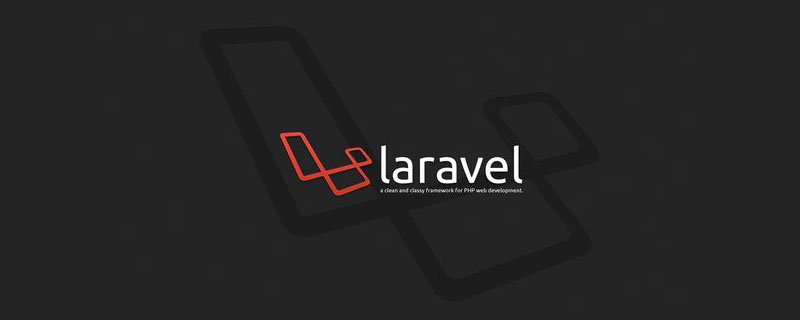 laravel单点登录方法详解Jun 15, 2022 am 11:45 AM
laravel单点登录方法详解Jun 15, 2022 am 11:45 AM本篇文章给大家带来了关于laravel的相关知识,其中主要介绍了关于单点登录的相关问题,单点登录是指在多个应用系统中,用户只需要登录一次就可以访问所有相互信任的应用系统,下面一起来看一下,希望对大家有帮助。
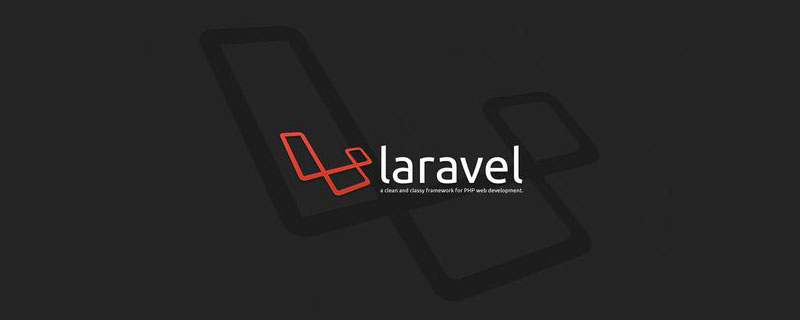 一起来聊聊Laravel的生命周期Apr 25, 2022 pm 12:04 PM
一起来聊聊Laravel的生命周期Apr 25, 2022 pm 12:04 PM本篇文章给大家带来了关于laravel的相关知识,其中主要介绍了关于Laravel的生命周期相关问题,Laravel 的生命周期从public\index.php开始,从public\index.php结束,希望对大家有帮助。
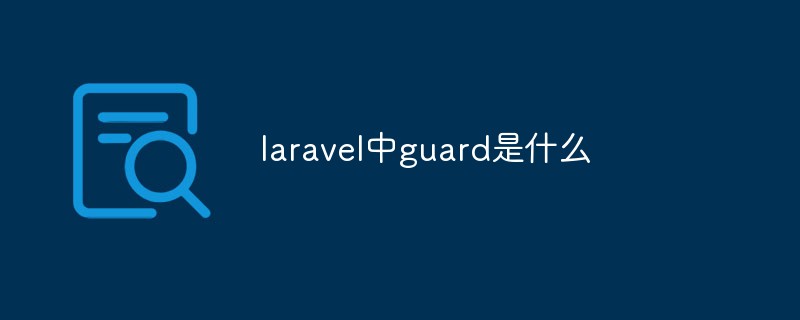 laravel中guard是什么Jun 02, 2022 pm 05:54 PM
laravel中guard是什么Jun 02, 2022 pm 05:54 PM在laravel中,guard是一个用于用户认证的插件;guard的作用就是处理认证判断每一个请求,从数据库中读取数据和用户输入的对比,调用是否登录过或者允许通过的,并且Guard能非常灵活的构建一套自己的认证体系。
 laravel中asset()方法怎么用Jun 02, 2022 pm 04:55 PM
laravel中asset()方法怎么用Jun 02, 2022 pm 04:55 PMlaravel中asset()方法的用法:1、用于引入静态文件,语法为“src="{{asset(‘需要引入的文件路径’)}}"”;2、用于给当前请求的scheme前端资源生成一个url,语法为“$url = asset('前端资源')”。
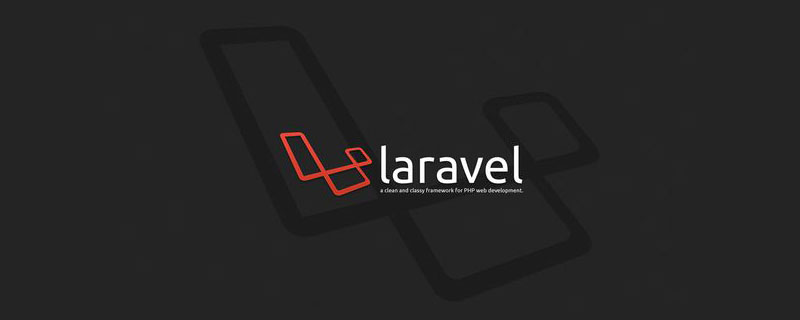 实例详解laravel使用中间件记录用户请求日志Apr 26, 2022 am 11:53 AM
实例详解laravel使用中间件记录用户请求日志Apr 26, 2022 am 11:53 AM本篇文章给大家带来了关于laravel的相关知识,其中主要介绍了关于使用中间件记录用户请求日志的相关问题,包括了创建中间件、注册中间件、记录用户访问等等内容,下面一起来看一下,希望对大家有帮助。
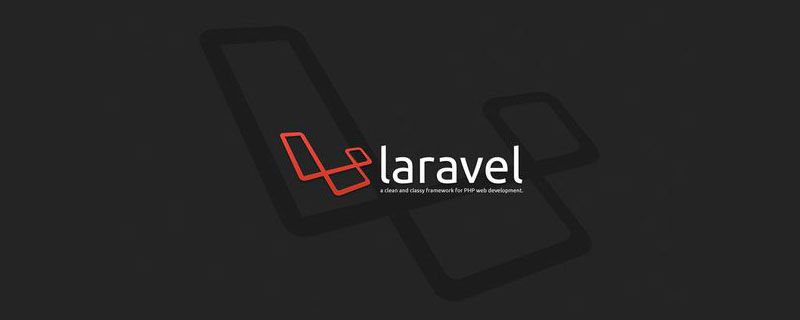 laravel中间件基础详解May 18, 2022 am 11:46 AM
laravel中间件基础详解May 18, 2022 am 11:46 AM本篇文章给大家带来了关于laravel的相关知识,其中主要介绍了关于中间件的相关问题,包括了什么是中间件、自定义中间件等等,中间件为过滤进入应用的 HTTP 请求提供了一套便利的机制,下面一起来看一下,希望对大家有帮助。
 laravel的fill方法怎么用Jun 06, 2022 pm 03:33 PM
laravel的fill方法怎么用Jun 06, 2022 pm 03:33 PM在laravel中,fill方法是一个给Eloquent实例赋值属性的方法,该方法可以理解为用于过滤前端传输过来的与模型中对应的多余字段;当调用该方法时,会先去检测当前Model的状态,根据fillable数组的设置,Model会处于不同的状态。
 laravel路由文件在哪个目录里Apr 28, 2022 pm 01:07 PM
laravel路由文件在哪个目录里Apr 28, 2022 pm 01:07 PMlaravel路由文件在“routes”目录里。Laravel中所有的路由文件定义在routes目录下,它里面的内容会自动被框架加载;该目录下默认有四个路由文件用于给不同的入口使用:web.php、api.php、console.php等。


Hot AI Tools

Undresser.AI Undress
AI-powered app for creating realistic nude photos

AI Clothes Remover
Online AI tool for removing clothes from photos.

Undress AI Tool
Undress images for free

Clothoff.io
AI clothes remover

AI Hentai Generator
Generate AI Hentai for free.

Hot Article

Hot Tools

MantisBT
Mantis is an easy-to-deploy web-based defect tracking tool designed to aid in product defect tracking. It requires PHP, MySQL and a web server. Check out our demo and hosting services.

Atom editor mac version download
The most popular open source editor

Dreamweaver Mac version
Visual web development tools

Notepad++7.3.1
Easy-to-use and free code editor

SublimeText3 English version
Recommended: Win version, supports code prompts!





